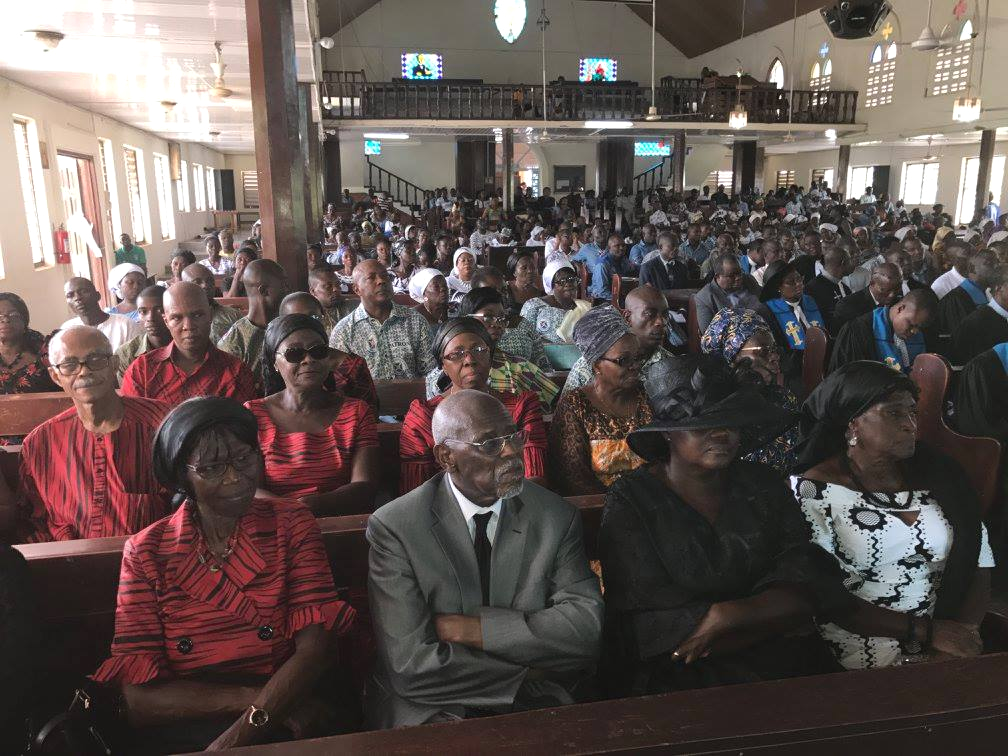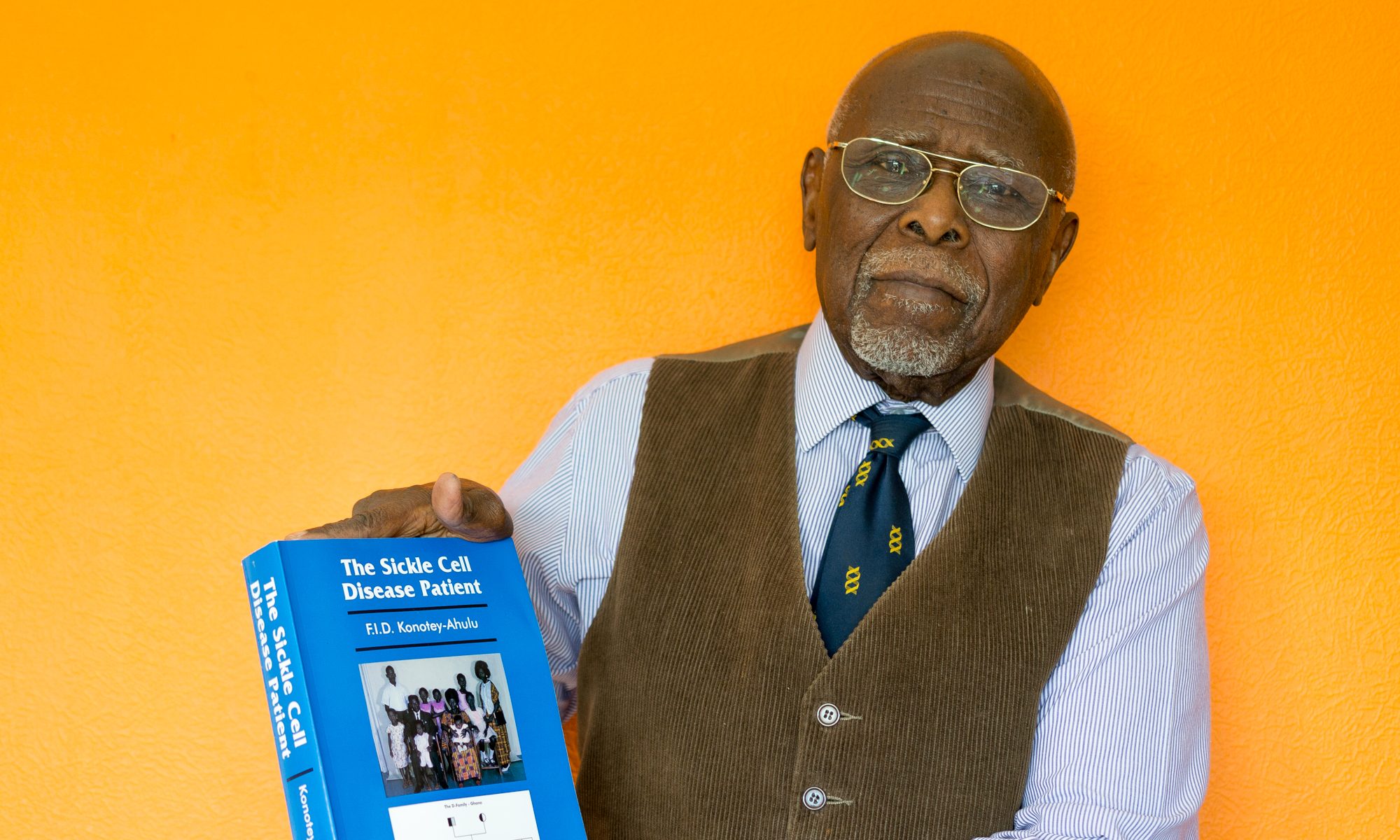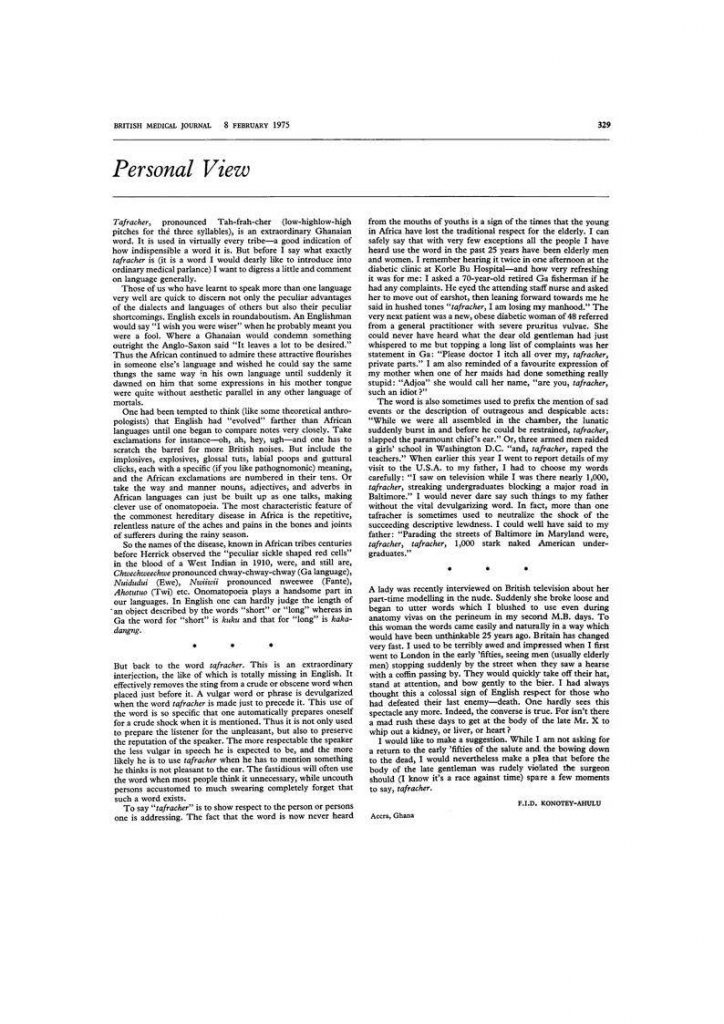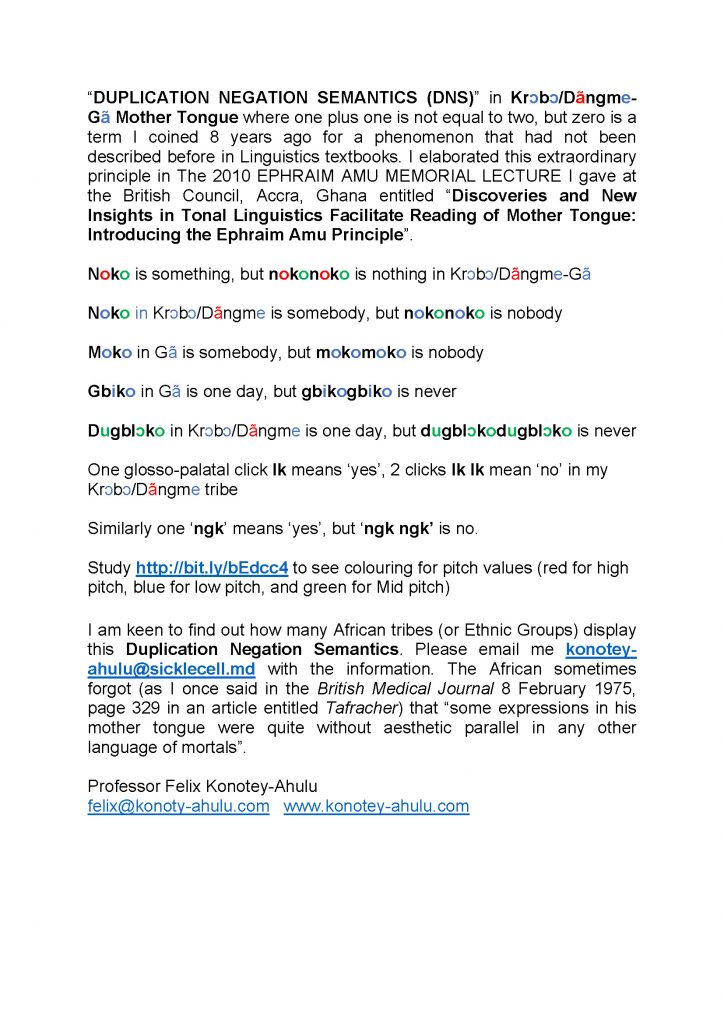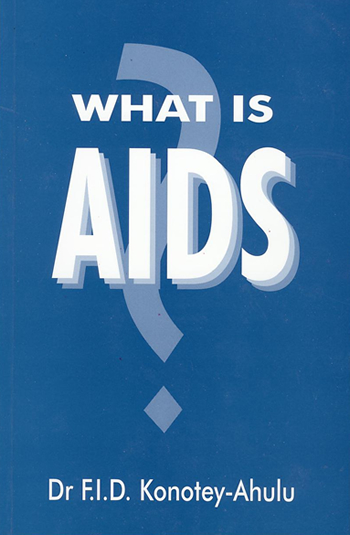Re: International medical graduates and quality of care: What if quality of care in developing country is better than UK’s?
Re: International medical graduates and quality of care Aneez Esmail, Julian Simpson. 356:doi10.1136/bmj.j574 International Medical Graduates and quality of care: What if quality of care in developing country is better than UK’s?
The excellent Editorial [February 6 2017] of Professor Aneez Esmail and Julian Simpson, hemmed in as it is to comparing and contrasting UK health care [1] with that of the USA vis-à-vis foreign trained doctors, was not expected to address the question: What if certain aspects of the quality of care in a developing country, say Ghana, is better than that in the UK? What is a doctor trained in Ghana by UK-trained doctors to do when he/she sees something taught at home is contradicted by UK practice with disastrous results?
JUST SEE WHO MY GREATEST TEACHERS IN MEDICINE WERE!
I dare to ask 21st Century Clinicians to compare themselves with those who taught me, and state honestly whether apart from the CT Scans, Ultrasound machines, MRI’s, and microsurgical techniques, they boast better clinical acumen than these grand-teachers?. I was trained at London University’s Westminster Hospital School of Medicine by the world’s greatest – Sir Clement Price-Thomas, Surgeon of King George VI, Sir Richard Bayliss Physician of Queen Elizabeth II, Sir Stanford Cade, World Number One in cancer surgery assisted by Charlie Westbury MS MRCP FRCS, then Professor J Pulvertaft (Pathology), Sir Arthur Bell Obs/Gynae, etc. and at the Post-graduate level Malariologist Professor Brian Maegraith, Liverpool University School of Tropical Medicine, Sir John Dacie, Haematologist at Hammersmith Hospital where Professors John Goodwin (Cardiology) and J McMichael assisted by Dr Celia Oakley taught me Cardiology, and where I first met Dr Geraint James who introduced me to his wife Professor (later Dame) Sheila Sherlock [2 3] of Royal Free Hospital, where I worked with the Artificial Kidney King of Europe Dr Stanley Shaldon. All these were Clinicians with the “History-Inspection-Palpation-Percussion-Auscultation” (HIPPA) approach to patient care which was what I taught my undergraduate and post-graduate students in Ghana. Then at Cambridge University I was very fortunate to be instructed in Haemoglobinopathy and G6PD Enzymopathy by Professor Hermann Lehmann FRS the Doyen of Abnormal Haemoglobins.
Back home in Ghana my Mentors were Colonial Physician Dr Albert Hawe MD FRCP [4] and Ghanaian Dr Silas Dodu MD FRCP DTMH who had collected most of the prizes at the University of Sheffield.
BUT WHY THIS CATALOGUE OF NAMES? ANSWER:
When the National Foundation and the March of Dimes paid for a 6-week tour of 11 leading Medical Institutions in the USA 45 years ago, and I did Grand Rounds at Cornell, George Washington University Hospital, Columbia University, Johns Hopkins, Yale, Howard, Tennessee, Indianapolis etc, and I often made Haemoglobin phenotype diagnoses without X-rays and Lab results but by just examining the patient using HIPPA
the Professors were so astounded they asked how I did it, and I just said “It’s the British Undergraduate Exercise that prepared me for the bush”.
THEN BACK TO THE UK FOR QUESTIONABLE MEDICAL CARE
The situation in the UK has drastically changed. Ghanaian doctors we taught would end up in the UK and be introduced to practice that looked at the blood of the patient before looking at the patient – quite opposite to what we taught them, preferring to look at Protocols hung up on a wall without realising that what is good for one patient may be poison for another. Or that what is recommended by NICE Guidelines could be killing patients [5-7]. How many British doctors, I wonder, are aware that I said 42 years ago in The Lancet that blood transfusion precipitated sickle cell crises? [8] Or that Graham Serjeant described a sickle cell anaemia lady he had never transfused but who going to the USA on holiday from Jamaica, checked into a Clinic for routine tests, was found to be anaemic and promptly transfused, only to die within 48 hours? [9] Or that I have described an “SS” man who would go into sickle cell crisis whenever Haemoglobin level rose above 9 grams per deci-Litre? [10]? I once referred one such patient to Professor Lucio Luzzatto at London’s Post-Graduate Medical School Hammersmith Hospital to venesect her every 6 months to bring Hb below 9 grams lest she went into sickle crisis. Sadly, with dogged determination British doctors would follow a Protocol that said Hb should not fall below 11.0 grams per deci Litre [11]. How many British Doctors would persist with Morphine and Diamorphine even when NCEPOD Report damned the Opiate Culture? [12-19]. Yet NICE continues to recommend intravenous Opiates? [5-7 12-19].
Even when a Nigerian Consultant Haematologist in a UK Teaching Hospital, himself “SS,” wrote a BMJ Editorial on Hydroxyurea saying “patients had been voting with their feet due to side effects” [20 21] clinicians continued to prescribe it.
KONOTEY-AHULU SICKLE CELL DISEASE PATIENT MANAGEMENT APPROACH
My immediate elder brother, my immediate younger brother, and the 5th of my parents’ 11 children had sickle cell disease [22]. I know the disease first hand. Having grown tired of criticising other clinicians about their mismanagement of patients with sickle cell disease I am offering doctors, nurses, patients and their relatives a real alternative to what the rest of the world (apart from Graham Serjeant [23] in the West Indies) prescribes [24]. My approach brings hospitalisation to a minimum, preferring patient management to disease treatment [25-29]. My kascdispatma (spelt fully above) produces PATIENT ACHIEVERS who use their non-abnormal haemoglobin genes inherited from the same parents to achieve things that their siblings without the disease have not achieved [30 31]. G6PD status of patients, meaningful genetic counselling with voluntary family size limitation [32], avoidance of harmful received wisdom underline the Common Sense Public Health Approach that is the defining feature of kascdispatma When Professor Helen Ranney of Albert Einstein University College of Medicine New York says “There is no single clinical experience in the United States comparable to that of Dr Konotey-Ahulu “[33] should not serious clinicians and parents struggling to look after sickle cell disease patients try my kascdispatma?.
Felix I D Konotey-Ahulu FGA MD(Lond) FRCP(Lond & Glasg) DTMH(L’pool) FGCP FWACP FTWAS
Conflict of Interest: None Declared felix@konotey-ahulu.com www.sicklecell.md
1 Aneez Esmail, Simpson Julian. International medical graduates and quality of care. BMJ 2017; 356: j574 (6 February 2017) doi:https://doi.org/10.1136/bmj.j574
2 Konotey-Ahulu FID. Konotey-Ahulu FID. Dame Sheila Sherlock’s Third World Dimension. BMJ rapid response 20 Jan 2002 http://www.bmj.com/content/324/7330/174.1.extract.reply#bmj_el_18859
3 Konotey-Ahulu FID. David Geraint James: Great Champion of Overseas Postgraduates. 18 Nov 2010 [Response to BMJ 341:doi.1136/bmj.c6400] See Ref 170 on Dame Sheila Sherlock 20 Jan 2002. http://www.bmj.com/content/341/bmj.c6400.full/reply#bmj_el_244903 | http://www.bmj.com/content/324/7330/174.1.extract.reply#bmj_el_18859
4 Konotey-Ahulu FID. Some personal encounters with a remarkable physician. (Tribute to Dr Albert Joseph Howe, OBE, CBE, MD, FRCP, DTMH). Ghana Med J 1979; 18: 88-90.
5 Gillis VL, Senthinathan , Dzingina M, Chamberlain K, Banks K, Baker MR, Longson D [Guideline Development Group]. Management of an acute painful sickle cell episode in hospital. Summary of NICE Guidance. BMJ 2012; 344: e4063 [doi:101136/bmj.e4063]
6 Konotey-Ahulu FID. UK drug related deaths are still rising: So where is NICE? Sept. 6 2009 BMJ Rapid Response to Susan Mayor on “UK drug related deaths are still rising 2 reports say” BMJ Sep 6. http://www.bmj.com/cgi/eletters/339/sep01_1/b3536#219836
7 Konotey-Ahulu FID. Management of an acute painful sickle cell episode in hospital: NICE guidance is frightening1 Sept 7 2012 www.bmj.com/content/344/bmj.e4063/rr/599158 [42 references]
8 Konotey-Ahulu FID. Sicklaemic human hygrometers. Lancet 1965 May 8; 1(7393): 1003-1004. http://www.pubmedcentral.nih.gov/picender.fcgi?artid=1846286&blobtype=pdf
9 Serjeant GR. Blood transfusion in sickle cell disease: A cautionary tale. Lancet 2003; 361: 1659
10 Konotey-Ahulu, FID. The Sickle Cell Disease Patient. Macmillan Education Ltd London 1991/1992. Foreword by Roland B Scott, MD (Howard University) – 36 chapters with 4,500 references, 643 pages. ISBN: 0-333-39239-6 & Konotey-Ahulu FID. The Sickle Cell Disease Patient, Watford: Tetteh-A’Domeno Co, 1996 Reprint of 1991 Macmillan book] http://www.sicklecell.md/aboutscd.asp [Hb > 9.0 grams >crises, p.482 Case History 21]
11 Claster Susan, Vichinsky Elliott P. Managing sickle cell disease. BMJ 1997; 327: 1151-1155. Doi:10.1136/bmj.327.7424.1151.
12…NCEPOD (National Confidential Enquiry into Patient Outcome and Death). Sickle: A Sickle Crisis? (2008) [Sebastian Lucas (Clinical Co-ordinator), David Mason (Clinical Co-ordinator), M Mason (Chief Executive), D Weyman (Researcher), Tom Treasurer (Chairman) info@incepod.org
13 …Konotey-Ahulu FID. Poor care for sickle cell disease patients: This wake up call is overdue BMJ Rapid Response May 28 2008 BMJ 2008; 336: 1152 to Susan Mayor “Enquiry shows poor care for patients with sickle cell disease” on National Confidential Enquiry into Patient Outcome and Death (NCEPOD) REPORT “SICKLE: A Sickle Crisis? (2008) http://www.bmj.com/cgi/eletters/336/7654/1152a#196224 | http://www.info@ncepod.org
14 Konotey-Ahulu FID. Inquest into diamorphine deaths: Does NCEPOD sickle patients report warrant a similar inquest? BMJ Rapid Response March 7 2009 http://www.bmj.com/cgi/eletters/338/mar03_3/b903#210208
15 Konotey-Ahulu FID. Opiates for sickle-cell crisis? Lancet 1998; 351: 1438. [“The question that puzzles me is: why do west African and West Indian patients with sickle-cell disease who did without morphine in their countries have to be given morphine pumps during sickle-cell crises when they come to the UK?”]
16 Konotey-Ahulu FID. Opiates for sickle-cell crisis. Lancet 1998; 352: 651-652. [In response to David Bevan’s criticism (in Lancet 1998; 351: page 1965) of white physicians who agree with Dr Konotey-Ahulu that opiates have created addicts in their hospital – “When I say routine opiates for sickle crisis are not the way to bring out these patients’ best potential in the long term I am glad to hear white physicians say the same…White physicians who, at the risk of being misunderstood by Bevan, voice their displeasure at what they see happening on their wards deserve commendation, not condemnation.”]
17 Konotey-Ahulu FID. Current “hit and miss” care provision for sickle cell disease patients in the UK. BMJ Rapid Response 22 July 2008 http://www.bmj.com/cgi/eletters/337/jul11_2/a771#199135
18 Konotey-Ahulu FID. Management of sickle cell disease versus management of the sickle cell disease patient. BMJ Rapid Response 17 September 2008 http://www.bmj.com/cgi/elettrs/337/sep08_1/a1397#202088
19 Konotey-Ahulu FID. Management of sickle cell disease patient in the community BMJ Rapid Response 13 April 2014 [90 References] to Brousse V, Makali J, Rees DC: Management of sickle cell disease in the community. BMJ 2014; 348: g1765 doi:10.1136/bmj.g1765 http://www.bmj.com/content/348/bmj.g1765/rr/694233
20 Olujohungbe A, Cinkotai KI, Yardumian A. Hydroxyurea therapy for sickle cell disease in Britain. BMJ 1998; 316: 1689 (6 June)
21 Konotey-Ahulu FID. Management of patients with sickle cell disease. African Journal of Health Sciences 1998; 5: 47[ Commenting on article of Sally Davies and Lola Oni (BMJ 315: 656 -60) “what I feel is more important in the day to day management of patients with a view to keeping them out of hospital, is clinical epidemiology which includes the circumstances of crises. Two examples suffice to ilustrate what I mean: … I fear Davies
and Oni’s statement that ‘The Central Middlesex management protocol uses morphine infusions’ will make morphine the accepted drug for sickle crisis management. The consequences of such an approach are dire, especially when some UK hospitals are already making diamorphine their first choice”.]
22 Konotey-Ahulu FID. The Human Genome Diversity Project: Cogitations of An African Native. Politics and the Life Sciences (PLS) 1999, Vol 18: No 2, pp 317-322. [Invited Commentary on Professor David Resnik’s article: The Human Genome Diversity Project: Ethical Problems and Solutions. [Chart “Sickle Cell Disease in Successive Ghanaian Generations for Three Centuries”]
23 Serjeant GR. Sickle Cell Disease. Oxford. Oxford Univ. Press (2nd Edition) (632 pages)
24 Davies SC, Oni L. Management of patients with sickle cell disease. BMJ 1997; 315: 656-660.
25 Konotey-Ahulu FID. The inheritance of Sickle Cell Disease. New African January 2000, pp 40-43 http://www.konotey-ahulu.com/pdfs/sicklecell_jan2001.pdf
26 Konotey-Ahulu FID. The Person with Sickle Cell Disease. New African March 2001, pp 38-39.http://www.konotey-ahulu.com/pdfs/sicklecell_mar2001.pdf
27 Konotey-Ahulu FID. Teenager with Sickle Cell Disease. New African. June 2001, 41-42 http://www.accessmylibrary.com/coms2/summary_028627289580_ITM http://www.konotey-ahulu.com/pdfs/sicklecell_jun2001.pdf
28 Konotey-Ahulu FID. Adult with Sickle Cell Disease. New African Sep. 2001, pp 40-43. http://www.konotey-ahulu.com/pdfs/sicklecell_sep2001.pdf | http://www.questia.com
29 Konotey-Ahulu FID. Sickle-cell disease and the patient. Lancet 2005; 365(9457): 382-83 January 29-February 4. [Commenting on Marie Stuart & Ronald Nagel’s “Sickle-cell disease” Seminar in Lancet 364: 1343-60, and Michaela Buckner’s “Sickle-cell disease: from Sierra Leone to southeast London” Lancet 364: 1361, it is pointed out that “Stuart and Nagel missed something out of their Seminar, which Michaela emphasizes – circumstances.”
30 Konotey-Ahulu FID. Sickle cell achievers’ conference. SICKLE CELL News Review 1995; Summer Edition: 5.
31 Omaboe Letitia, Konotey-Ahulu FID. The Second International Conference On The Achievements of Sickle Cell Disease Patients. Accra 19th July 1995 Conference Brochure 19pp
32 Konotey-Ahulu FID. Sickle Cell and Allied Haemoglobinopathy: The Genetics That Touches You and Me – University of Cape Coast, Ghana, GOLDEN JUBILEE MESSAGE. (Sept 19 2014) http://bit.ly/1w3BuvM
33 Ranney Helen. “There is no single clinical experience in the United States comparable to that of Dr Konotey-Ahulu”. In Summary of Symposium on Sickle Cell Disease – Diagnosis, Management, Education, and Research – In Sickle Cell Disease, Editors Abramson, JF Bertles, Doris Wethers (C. Mosby & Co) 1972, page 320.
Competing interests: No competing interests
